By Raimondo Zucca, Professor, University of Sassari (Sardinia)
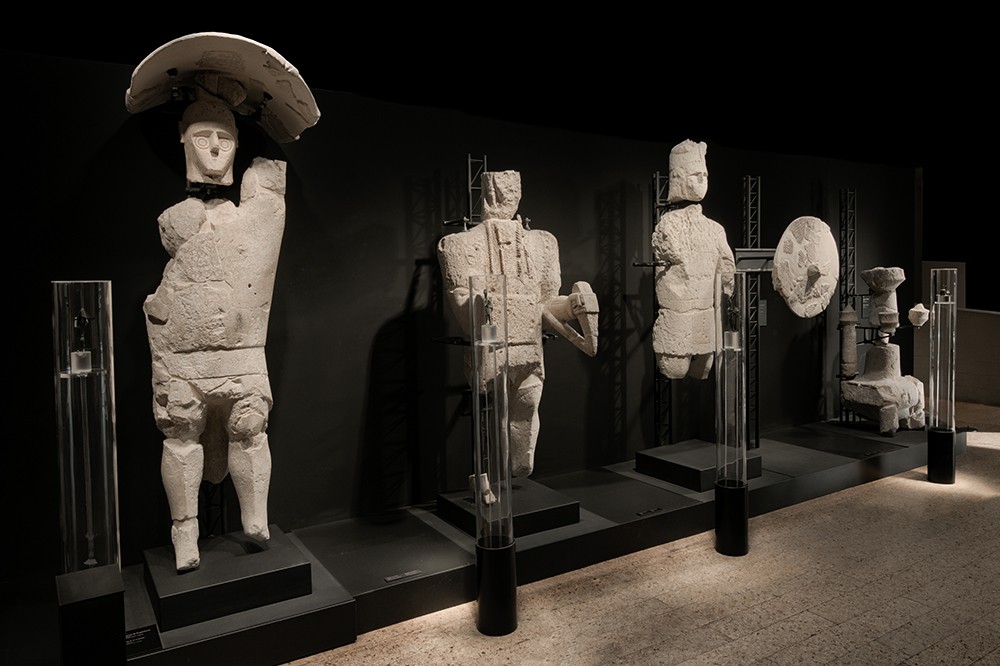
Anthropomorphic sculptures
The anthropomorphic sculptures of Mont’e Prama represent two categories of young males: some are unarmed, others are archers or swordsmen. These two categories refer ideologically to an initiation process for Sardinian youth: initially the men served unarmed, with just a shield and caestus (battle glove), and then they were armed—first with a bow, and ultimately with a sword and a circular shield.
Unarmed youth
Initiation rituals often involved a particularly bloody ludus or initiatory fight, as a test of courage. The Mont’e Prama sculptures show unarmed youths in ludus against an opponent equipped with a dagger; the youths defend themselves with a large shield of soft leather, and they attack with an armguard on the right arm, a hand sheathed in a caestus, and a dagger.
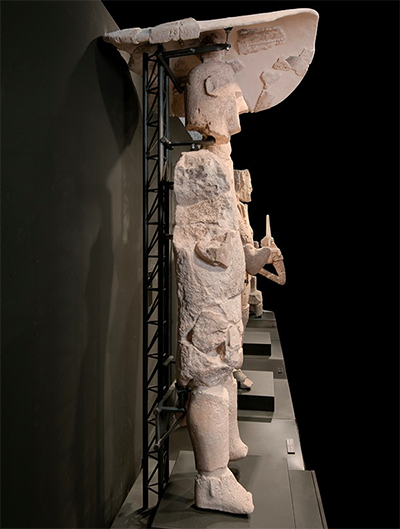
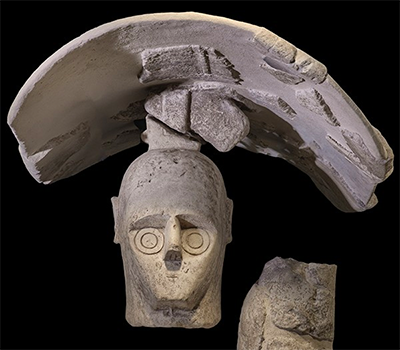
A soft shield is held overhead by this unarmed youth (seen in full in the flanking images).
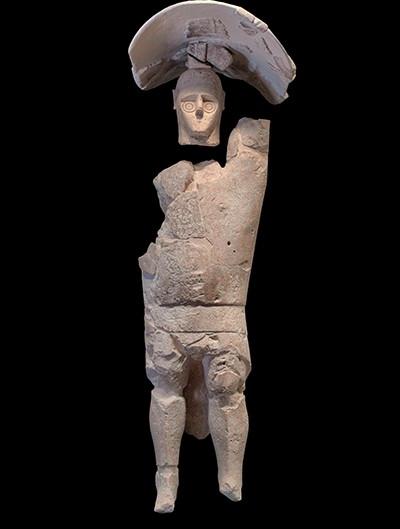
The unarmed figures of Mont’e Prama are characterized by a spheroidal head with a triangular face, round eyes made of a pair of concentric circles, a pilaster-like nose, and a mouth barely sketched in as a horizontal or curved incision. A short neck connects the head to a massive, naked body.
Forty Giants
As research unfolds, the current (still provisional) count of anthropomorphic sculptures is forty Giants; here are several of them arrayed in the museum. Six of the Giants were probably equipped with a caestus, a rolled shield, sandals, and a conical headdress; eighteen of them had no weapons but did have armguards, a caestus, and a shield overhead; eight of them were archers; and eight of them were warriors. Stylistically, the sculptures are characterized by sharply geometric decorative elements common also to bronze figures from the northern Sinis peninsula where Mont’e Prama sits.
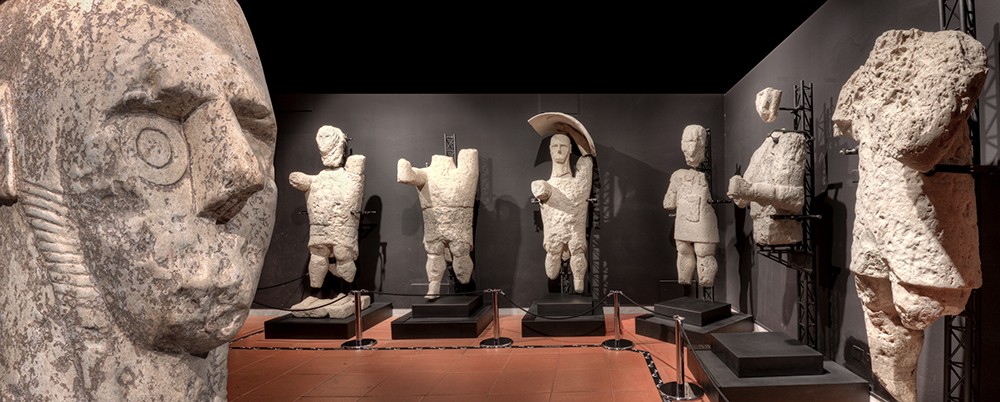
Archers
Mont’e Prama’s figures of archers are posed in prayer and stand on a quadrangular base. Each figure’s head is protected by a horned helmet, and the triangular face has a pilaster-like nose and round, double-circle eyes. The torso is clothed in a tunic that covers the loins. On the chest is a rectangular protective plate, a kardiophylax. The left arm, protected by an armguard, enables the gloved hand to support the bow, while the other arm is bent at a right angle to raise the forearm and the clenched hand in a gesture of prayer. The legs, slightly apart, have large, unshod feet standing on a quadrangular base.
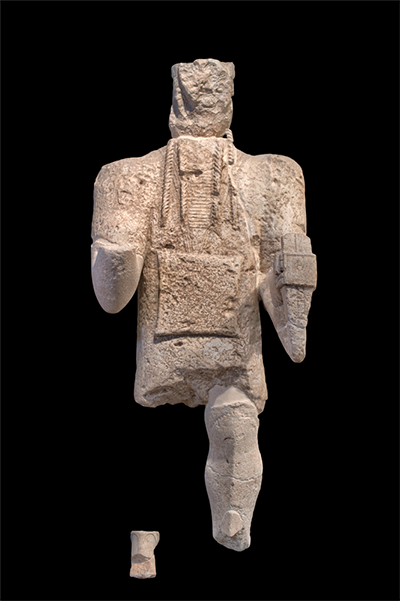
A standing archer.
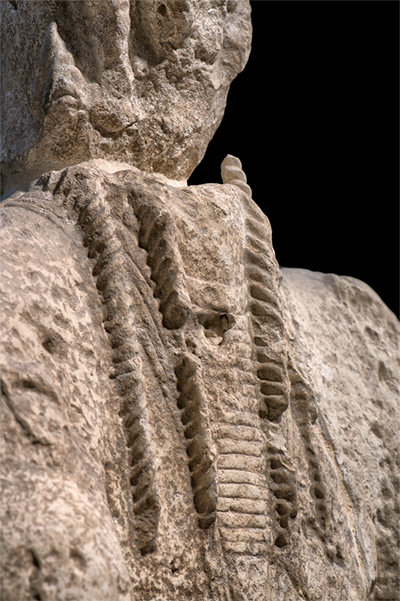
Detail of an archer's braids and ruff.
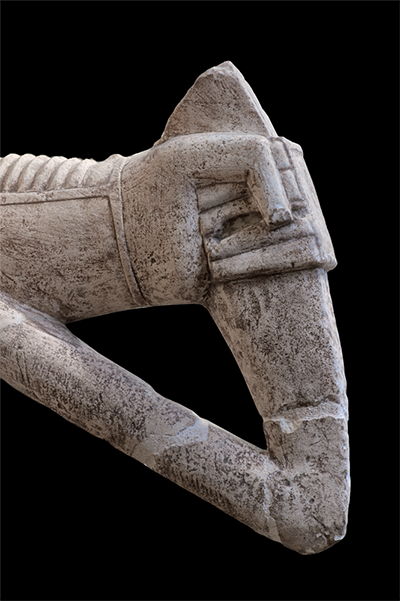
Detail of a gloved hand holding a bow.
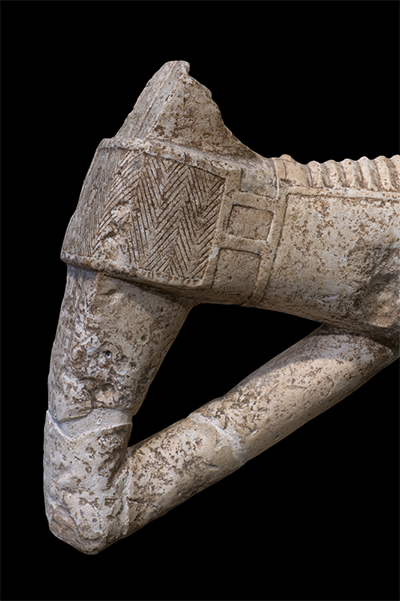
Detail of an armguard and a glove decorated with chevrons.
Warriors
Each warrior figure from Mont’e Prama has a triangular face with large, circular eyes divided by a pilaster-like nose, and headgear: either a crested helmet sporting two large horns, or a conical helmet derived from an Assyrian model. On the torso is a tunic with a vertical band that is decorated with a pattern of triangles between horizontal lines and that ends in fringes.
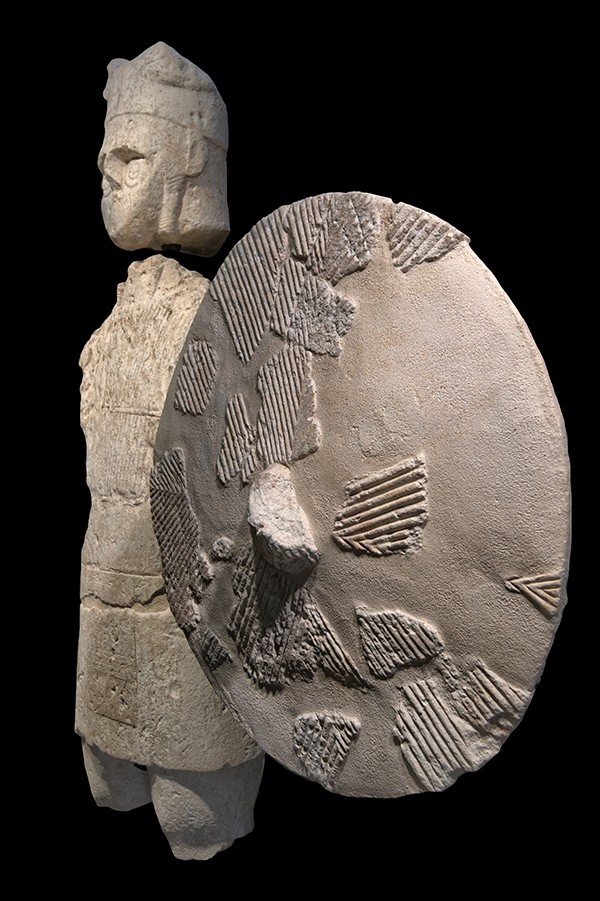
A warrior with a shield.
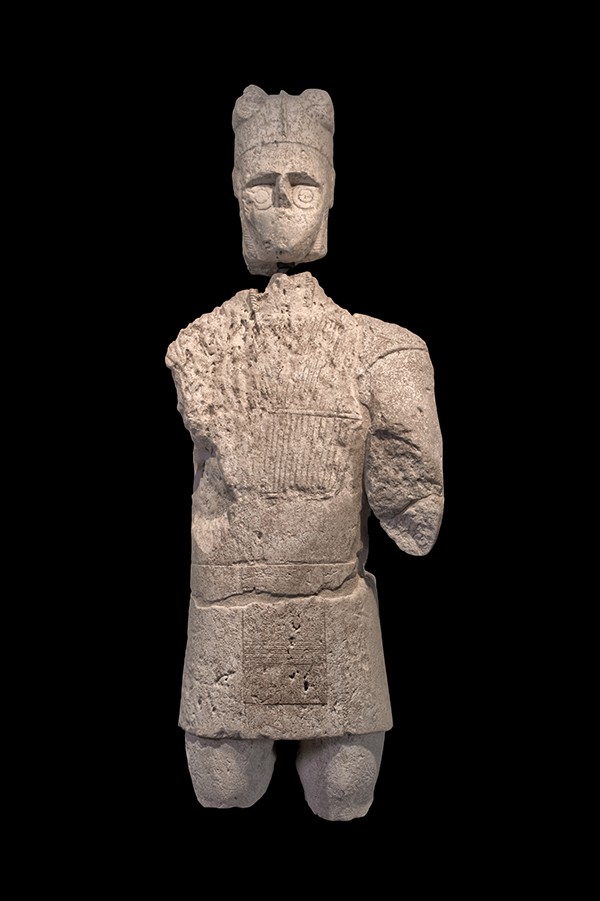
A standing warrior.
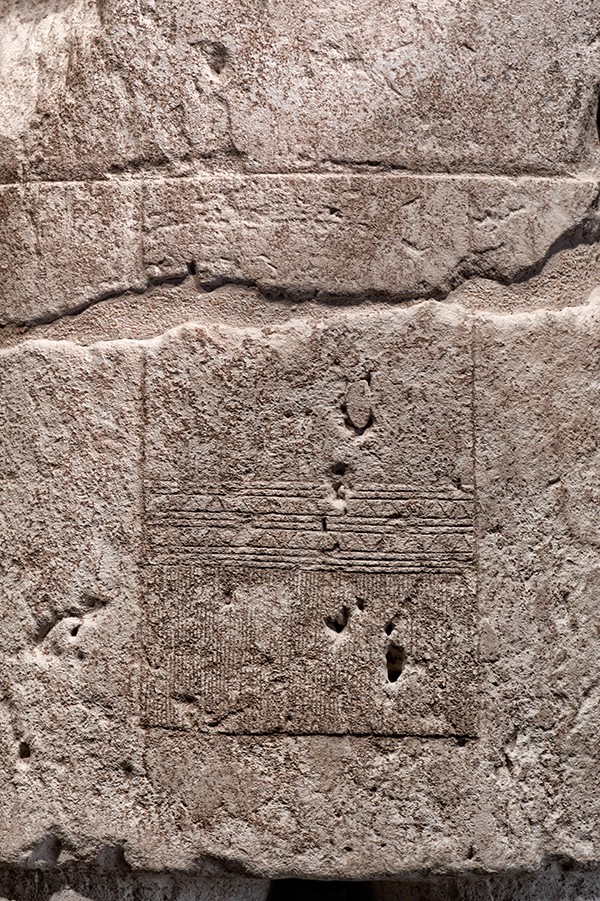
Detail of the tunic band with its horizontal lines, wolf teeth, and long fringes.
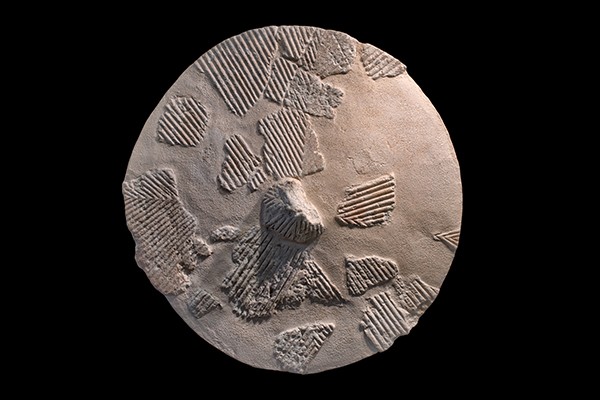
The shield for a warrior statue.
Nonhuman shapes
Found alongside the anthropomorphic statues at Mont’e Prama were two kinds of nonhuman shapes: baetyls and tower models. The baetyls were sacred stones associated with the Middle and Late Bronze Age rituals centered on the ancestor cult in the exedra of the tombs of the Giants. The models (of limestone, or sandstone in some cases) depicted nuraghi, the circular towers of Sardinia surrounded by three, or often four, or even eight, lobes.

Models of nuraghi.
